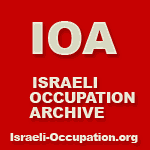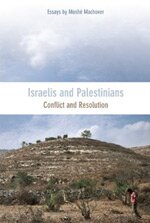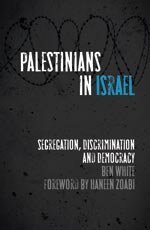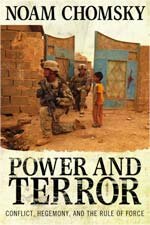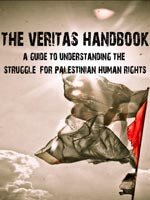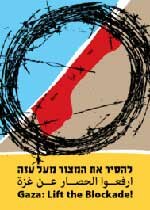BADIL document page:
www.badil.org/index.php?page=shop.product_details&flypage=garden_flypage.tpl&product_id=119&category_id=2&vmcchk=1&option=com_virtuemart&Itemid=4
Badil website: www.badil.org
For Immediate Release
28 January 2010 – BADIL Resource Center for Palestinian Residency and
Refugee Rights is proud to announce the release of its biennial Survey
of Palestinian Refugees and Internally Displaced Persons 2008-2009.
More than 61 years since the Palestinian Nakba (catastrophe) and 42
years after Israel’s belligerent occupation of the West Bank and Gaza
Strip, the issue of forced displacement of Palestinians from their
homeland remains an ongoing phenomenon that fails to receive the
attention it deserves.
At the end of 2008, at least 7.1 million Palestinians, representing 67
percent of the entire Palestinian population (10.6 million) worldwide
were displaced persons. Among them are 6.6 million refugees and 427,000
IDPs. This makes Palestinian refugees and internally displaced persons
(IDPs) the largest and longest-standing case of displaced persons in the
world today.
Forced displacement of Palestinians is as much a part of the Palestinian
present as it is about their past. By 2009, Palestinian communities in
the Occupied Palestinian Territory (OPT) at particular risk of forced
displacement include communities in the path of the Wall (498,000
Palestinians in 92 communities), Palestinian Bedouin, Palestinians
residing in the Jordan Valley, eastern Jerusalem, Hebron, Southern Gaza
and the Gaza Strip buffer zone. Among Palestinian citizens of Israel,
the Bedouin in the Naqab (Negev) and Palestinian communities in the
Galilee and the so-called “mixed cities” are particularly vulnerable to
forced displacement.
Excessive and indiscriminate use of force, home demolition and forced
evictions, attacks and harassment by non-state actors, revocation of
residency rights, closure and segregation, confiscation and
discriminatory distribution of land, and settler implantation, have been
identified as Israeli policies and practices which constitute the main
“triggers” of forced Palestinian displacement on both sides of the Green
Line (Israel and OPT).
In light of the historical continuity and systematic character of
Israeli policies and practices that displace and dispossess Palestinians
within Israel and the OPT, a holistic framework is required for the
analysis of Israel’s regime, identification of root causes of forced
Palestinian displacement, and effective remedies.
The 2008-09 Survey illustrates how Palestinian displacement and
dispossession are not the result of incidental or isolated occurrences,
but rather the consequence of an over-arching Israeli policy designed to
consolidate a “Jewish state” in historic Palestine, while severely
restricting Palestinian territorial presence in their homeland. In light
of this agenda, Israel’s contemporary regime of control over the
Palestinian people, those in Israel, the OPT and in exile, should be
understood as one that combines occupation, colonization and apartheid.
The lack of political will by states and the United Nations to protect
Palestinians and to hold Israel accountable for gross violations of
international human rights and international humanitarian law
contributes to more forced displacement of Palestinians.
In the absence of effective protection of their rights to return,
restitution and compensation by governments and the United Nations,
Palestinian refugees and IDPs have continued to protect and affect these
rights by themselves. Campaigns of Palestinian civil society have gained
ground, particularly the Campaign for Boycott, Divestment and Sanctions
(BDS) against Israel until it abides by international law.
Parallel efforts have been undertaken by local and international human
rights organizations and lawyers for accountability to international law
and ending Israeli impunity. These initiatives in UN fora and in
domestic courts under universal jurisdiction have so far failed to
achieve substantive investigation or prosecution. They have, however,
succeeded to convey the message to Israel and the Palestinian victims
that impunity will not prevail in the long term.
To order your copy of the Survey of Palestinian Refugees and Internally
Displaced Persons 2008 – 2009, please email:
Copies are 10€ or 15$ each. Please contact us about bulk orders.
A [free] PDF version of each chapter is also available at:
<http://www.badil.org/en/publications?page=shop.product_details&flypage=garden_flypage.tpl&product_id=119&category_id=2>
Survey of Palestinian Refugees and Internally Displaced Persons 2008 – 2009
215 pages. 30 cm
ISSN: 1728-1679
Read what people are saying about the Survey of Palestinian Refugees and
Internally Displaced Persons 2008 – 2009:
“Perhaps the greatest injustice of the post-World War II period, and
certainly the most long-standing, is that which has been perpetrated on
millions of Palestinian refugees and internally displaced persons driven
from their homes by ethnic cleansing, war and wall-building in the
course of Israel’s insatiable demand for Palestinian land, and forgotten
by the international community in its determination to appease the state
of Israel. Israel’s recent assault on Gaza – Operation Cast Lead – has
resulted in the further displacement of nearly 100,000 persons but again
there has been no serious response from the international community. In
the past sixty years, norms of international law designed to punish war
crimes and crimes against humanity and to protect refugees have been
forsaken in the case of Palestinians. BADIL`s Survey of Palestinian
Refugees and Internally Displaced Persons seeks to create an awareness
of the plight of Palestinian refugees and internally displaced persons
by providing an account of the history of Palestinian displacement,
describing the factual situation of Palestinian refugees and internally
displaced persons, and considering the legal framework in which a just
solution may be achieved. Hopefully this Survey will go some way towards
reminding the international community of a forgotten people and of the
injustice in which it is complicit.”
John Dugard
Professor of International Law and Former Special Rapporteur to the UN
Council on Human Rights on Human Rights in the Occupied Palestinian
Territory
“The BADIL Research Center’s overview of the situation facing
Palestinian refugees and internally displaced persons is reliable and
invaluable. It provides readers with facts, interpretation, legal and
political analysis, and policy recommendations. Anyone who doubts the
relevance of the refugee dimensions of the Israel/Palestine conflict
needs to read and ponder this admirable presentation of this vital
material.”
Richard Falk
Special Rapporteur to the UN Council on Human Rights on Human Rights in
the Occupied Palestinian Territory
“This is a unique and precious volume. With the Survey’s publication,
BADIL have provided an immeasurable service to scholars and the general
public alike. The dispossessed, the hidden from view and the
disenfranchised have been restored to their humanity and dignity.
Numbers and statistics are transformed, through scrupulous and
painstaking work, into the embodiment of the Palestinian spirit. Every
refugee is here returned to their status as a bearer of inalienable and
sovereign rights under international law.”
Karma Nabulsi
Oxford University
“BADIL’s most recent Survey of Palestinian Refugees and Internally
Displaced Persons continues that organization’s tradition of painstaking
documentation and penetrating analysis of the condition of displaced
Palestinians. What is particularly striking about this edition is the
commitment to a wide-angle perspective – one that seeks to make sense of
Israel’s policies toward Palestinians within its own putative borders
and other territories under its control, as well as of the impacts on
displaced Palestinians of regional developments, such as the U.S.
invasion of Iraq. This work will prove to be an invaluable resource to
journalists, researchers, and activists who seek understanding of what
remains the central dynamic in the century-long confrontation between
Zionism and the Palestinians: the displacement of the indigenous
Palestinian population and the clearing of space for exclusively Jewish
settlement.”
George Bisharat
University of California, Hastings College of the Law
All rights reserved
© BADIL Resource Center for Palestinian Residency & Refugee Rights





















